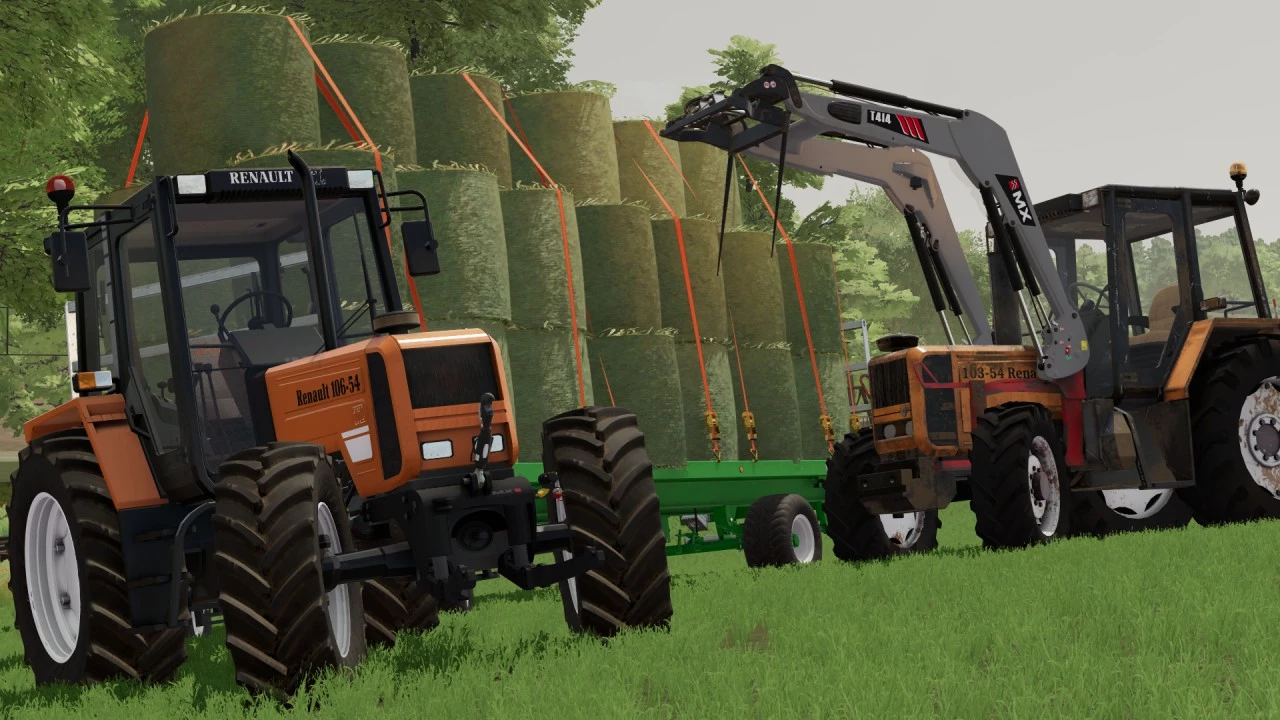YETRAC
Renault Agriculture: Cultivating a Legacy in Agricultural Machinery
Renault Agriculture: Cultivating a Legacy in Agricultural Machinery
Renault Agriculture S.A.S., pronounced as [ʁəno aɡʁikyltyʁ(ə)], stands as a testament to the convergence of automotive ingenuity and agricultural innovation. Established in 1918 as a division of the renowned French car manufacturer Renault, this agricultural machinery giant left an indelible mark on the world of farming. In this comprehensive article, we unearth the rich history, pioneering innovations, and eventual transition of Renault Agriculture into Claas Tractor S.A.S. and Auto Châssis International SNC.
The Birth of Renault Agriculture
The inception of Renault Agriculture can be traced back to the aftermath of World War I. Drawing on their experience in designing armored military vehicles, Renault utilized its engineering prowess to venture into the realm of agricultural machinery. Department 14 at Renault, responsible for developing the famous FT tank, engineered the company’s first tractor, the Type GP. Powered by a four-cylinder engine and featuring tracks, this tractor, assembled in Renault’s Billancourt factory from November 11, 1918, marked the company’s entry into the agricultural sector.
Notable distinctions of the Type GP included its front-engine design and reduced weight compared to the FT tank. Renault tested these tractors at Louis Renault’s farm in Herqueville, showcasing their dedication to product excellence. Subsequent models like the Type HO, introduced in 1921, replaced tracks with conventional wheels. In 1931, the PE1 model relocated the radiator to the front, and by 1933, Renault had produced France’s first rubber-wheeled tractor. The company’s commitment to innovation was further exemplified with the introduction of its first diesel-powered model, the Type VI, in 1932. By 1938, Renault was producing approximately 40 tractors per month, making it the largest tractor manufacturer in France.
Post-War Expansion and Renault’s Agricultural Dominance
Following World War II and the nationalization of the company, Renault Agriculture resumed production at its Le Mans plant. This facility, which included foundry, mechanical parts, painting, and tractor manufacturing sections, played a pivotal role in Renault’s operations. It was during this period that Renault Agriculture introduced a series of tractor models, such as the D, N, E, and Super series, solidifying its position as a leader in the French agricultural machinery market.
Renault Agriculture also championed color standardization, adopting the distinctive orange color for its models in 1956. By 1950, Renault had become France’s largest tractor manufacturer, producing an impressive 8,549 units, constituting 58% of the country’s total production. The 1960s saw the introduction of the 385 model, featuring a 12-gear transmission, alongside the use of engines from manufacturers like MWM and Perkins. In a testament to its versatility, Renault Agriculture produced the One-Sixty Diesel for Allis-Chalmers in the 1960s and entered the four-wheel-drive tractor market in 1968.
During the 1970s and 1980s, Renault Agriculture expanded its product range by partnering with companies such as Carraro and Mitsubishi, showcasing its commitment to innovation and collaboration. At the 1981 SIMA exhibition, Renault Agriculture unveiled the TX range, which featured comfort elements developed in collaboration with Renault’s car division, blending comfort and utility seamlessly. Interestingly, the company named its tractors after ancient gods during this period, adding a touch of mythology to the world of farming machinery.
Strategic Partnerships and Transition
Renault Agriculture’s commitment to innovation and collaboration extended into the late 20th century. From 1993 to 1998, Renault Agriculture partnered with John Deere, supplying John Deere engines while receiving tractors marketed as the 3000 series in return. In 1994, a strategic partnership with Massey Ferguson led to the creation of the Groupement International de Mécanique Agricole (GIMA), an equally owned joint venture aimed at manufacturing transaxles and related components.
Renault Agriculture continued to expand its horizons by marketing products from British agricultural machinery manufacturer JCB in France in 1995. In 1997, the company acquired a 16.6% stake in Agritalia, a manufacturer of orchard tractors. Notably, Renault Agriculture ventured into the Indian market by purchasing a stake in International Tractors, forming the Sonalika-Renault joint venture in 2000.
However, a significant turning point in Renault Agriculture’s history came in 2003 when Renault decided to sell a 51% majority stake in the tractor manufacturing plant to Claas, a German agricultural machinery rival. By 2006, Claas had increased its ownership to 80% and subsequently took full control, renaming the division Claas Tractor. During this transition, the Renault brand gradually phased out, and all tractor models produced at Le Mans bore the Claas badge.
Renault Agriculture’s Legacy: Claas Tractor and Auto Châssis International
Renault Agriculture’s legacy endures through its successors. Claas Tractor S.A.S., a subsidiary of the Claas group, has been the main tractor manufacturing operation since 2003. The company continues to produce a wide range of high-quality tractors within its facilities.
Auto Châssis International SNC, established in 1999 by Renault, manages the foundry and parts area of the Le Mans facility. With worldwide operations, ACI supplies the Renault-Nissan Alliance and plays a pivotal role in the automotive industry.
In conclusion, Renault Agriculture, born from Renault’s automotive expertise and wartime innovation, left an indelible mark on the agricultural machinery landscape. Its pioneering spirit, commitment to innovation, and strategic partnerships paved the way for its successors, Claas Tractor S.A.S. and Auto Châssis International SNC, to continue the legacy of excellence in the world of farming machinery.

